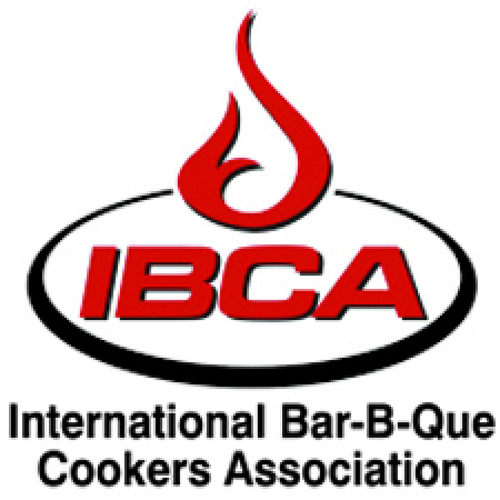BBQ Is Now! It’s All About The BACON!
 Paul Kirk
Paul Kirk
BBQ Hall Of Famer
Certified Master Judge
Just to be a little different this month, we’re going to look into some real slow smoking and make some bacon and use it in some recipes that you can use for misc. category’s at BBQ contest. A couple of note: You can use an indirect BBQ Pit to make bacon: BACON UNIVERSITY OF MISSOURI CURING PROCESS
Home Curing Bacon for a Mild Flavor
Maurice A. Alexander Department of Animal Science William C. Stringer Department of Food Science and Nutrition
Most people eat bacon because they like it, not for its nutritional value. Country-cured bacon is usually saltier and less desirable than commercially prepared bacon. This guide will outline procedures for curing bacon to get a mild flavor. When production of bacon depends upon natural conditions for refrigeration, pork bellies should be placed in cure during December through February. The risk of spoilage is greater during the warmer seasons of fall and spring.
Product: To successfully home cure bacon, begin with fresh bellies that have been chilled to about 42 degrees Fahrenheit within 24 to 30 hours after slaughter. If the fresh bellies are purchased from a commercial source, they have been properly chilled. If the source is farm slaughter, take care to chill them rapidly. Do not stack warm bellies during the chilling process. Trim the bellies to desired shape and apply cure within 48 hours after slaughter. Bellies prepared from skinned carcasses may be cured successfully in the same manner as those from scalded carcasses.
Curing ingredients: Salt is the primary ingredient Sugar is added to offset some of the salt’s harshness A combination of 3 pounds salt and 1-1/2 pounds sugar, either white or brown, is a basic mixture. There are several commercially prepared cures comprised of this basic mixture. Some have added spices and flavoring to give a characteristic flavor, aroma or appearance. A cure mixture that performs well under home curing conditions consists of 7 pounds meat curing salt, 4 pounds sugar (white, brown or a combination) and 3 ounces of nitrate (saltpeter — optional). This cure produces mild-flavored bacon.
Applying cure: If commercially prepared cure is used, apply according to the manufacturer’s instructions. If you prepare your cure according to the suggested recipe, apply the cure at a rate of 1/2 ounce per pound fresh belly. If you cannot weigh the ingredients and bellies, you can put the cure on by sprinkling the skin side and by rubbing the sides and inside well with the cure. Hold the belly on edge and tap gently on the table to remove excess cure. The amount applied will equal about 1/2 ounce per pound.
Curing time: This is why harvesting animals was done in the fall…in days gone by for the lack of refrigeration.
Stack the bellies crisscross no more than four layers deep on a table that is tilted to allow the moisture to drain away. Plywood on a set of sawhorses works well. Place the bellies in a well-ventilated, odor-free room and allow to; cure 7 days. If the bellies freeze before 7 days, allow them to defrost and add one day to cure for each day they were frozen. After curing, the product should be smoked.
Preparation for smoking: Wash the bacon in warm water, hang in the smokehouse with the door open and allow to dry. This may take two or three days. The meat will not take smoke until the surface is dry. If the meat is smoked when still damp, the smoke will be smudgy and the meat will not taste as good. When the bacon is dry, apply the smoke and allow about 36 to 48 hours completing the smoking. Add sawdust or wood as needed during the smoking.
Smokehouse: A smokehouse may be constructed using three pieces of tempered Masonite, stove pipe, a 30-gallon drum, and frame lumber. The outside dimensions are about 2 feet wide, 4 feet deep and 8 feet tall. This will smoke the bacon and jowls from five hogs. Smoke from burning sawdust in the drum is vented into a lower corner of the smokehouse, and then vented out the opposite corner near the top of the flu. The drum should lay on a metal base with about 2 feet of 3- or 4-inch vent pipe to the smokehouse. Air vents should be made in the drum on the side opposite the vent pipe and about one-fourth the distance up from the bottom. Cut a hole in the top to allow filling with sawdust. Start the smoke generator by putting crumpled paper in the lower vents, piling sawdust on the paper and lighting the paper. Leave enough room for air to get in as the sawdust burns. The sawdust should smolder and give off smoke. If it flames, dampen the sawdust with water.
Bacon hangers: Bacon hangers can be made of non-resinous wood material about 2-inches wide, 1/2-inch thick, and 12-inches long. Space four or five number 6 galvanized nails along the board, make a hanger from number 9 galvanized wire and fasten to the middle of the board. You can lay the bellies on the Pit’s grates rather than hanging them.
Source of wood for smoke: Use only hardwood sawdust or chips for smoking. Resinous evergreen wood will impart an undesirable flavor. Sawdust from a stave bolt mill or sawmill where no resinous lumber is cut will be fine. Since most home smokehouses are designed to give a cold smoke, drying and smoking will take longer than at a commercial facility.
Handling the finished product: Bacon cured and smoked in this fashion is perishable and needs to be frozen or stored in a refrigerator until eaten. Remove the rind if it is not removed during slaughter, slice, wrap in freezer paper and freeze. The sliced bacon will retain its quality 2 to 3 months in freezer storage. If more bacon was cured than the family will eat in two to three months, wrap and freeze in chunks. Bacon will keep its fresh flavor longer during freezer storage if it is not sliced. This is a fabulous dish that is wonderful during the holidays or any time of year. The maple and bacon with the cinnamon rolls are a perfect combination. And “YES” these can be done in your smoker! If you are concerned about too much smoke, you can cover them with foil. I suggest without the foil the flavors something to savor.
Maple Bacon Cinnamon Roll Bake
Ingredients
2 cans of Pillsbury 12.4-ounce Cinnamon Rolls
5 eggs
1/3 cup of heavy whipping cream
1/4 cup of butter melted 2 teaspoons of vanilla
1/4 cup of maple syrup
6 pieces of cooked bacon chopped up
Directions: Heat smoker/oven to 375º degrees F. Place melted butter in a 9X13 baking dish. Take all the rolls out of their cans and cut each roll into 6 pieces each. Spread all cut up pieces in the baking dish. Sprinkle bacon on top. In a medium bowl, beat eggs, cream, and vanilla. Pour over cinnamon roll mixture. Stir the pieces around to make sure all are covered with the liquid mixture. Drizzle the syrup over the cinnamon rolls. Bake for 23-28 minutes or until golden brown and inserted knife comes out clean.
Take the icing from each cinnamon roll package and heat in a skillet or microwave for 15-20 seconds (take the tops off the icing before heating, they are aluminum) to warm it and pour over the top of the casserole. With their short growing season, Hatch Chiles are a rare treat. Buy them if you can find them, then try these spectacular (and easy) Hatch Chile Poppers! The rest of the year, just sub jalapeños and dive right in.
BACON-WRAPPED HATCH CHILE POPPERS
Ingredients:
8 (6-inch) Hatch chile peppers (see notes)
4 ounces cream cheese, chilled (see notes)
8 slices regular (not thick cut) bacon
Directions: Preheat Smoker/Grill/Oven to 425° degrees F. Line a baking sheet with aluminum foil if using your oven. Slice the top with stem off each chile. Carefully cut around the inside pitch to loosen the seeds. Pull out the seeds and any loose pith and discard. Cut the cream cheese into 8 equal planks. Insert one cream cheese plank into each chile (you will feel a natural resistance when the cream cheese is all the way in). If you have extra left sticking out, you can cut or pull it off and use it in another chile that has extra space. Wrap each chile with a piece of bacon and set on the prepared baking sheet, or grill grates, seam side down. Cook about 10 minutes, flipping once, until bacon is done, and the cream cheese is heated through. Remove from the oven and let stand 5 minutes before serving. 4 to 8 servings
Notes: When you pick out Hatch chile peppers, you can pick whatever size you want. I like the 6-inch because the piece of cream cheese fits nicely in that size. Whichever size you choose, try to stick with a similar size across all peppers so they cook evenly. Chilled cream cheese is easier to work with here. You will be cutting it into little planks, picking it up, and stuffing it in the chile, so the firmer, the better.

Originally it started as a printed newsletter to let avid barbecuers keep track of upcoming events and results from past events. Today we have evolved into a barbecue and grilling information super highway as we share information about ALL things barbecue and grilling.
© 2022 National Barbecue News: Designed by ThinkCalico





